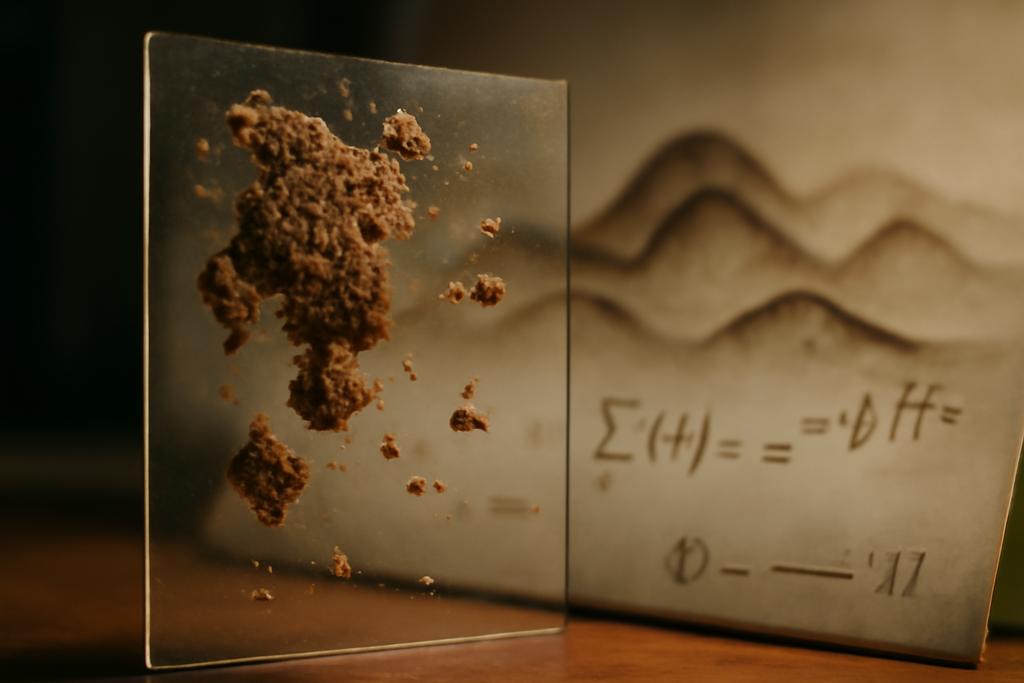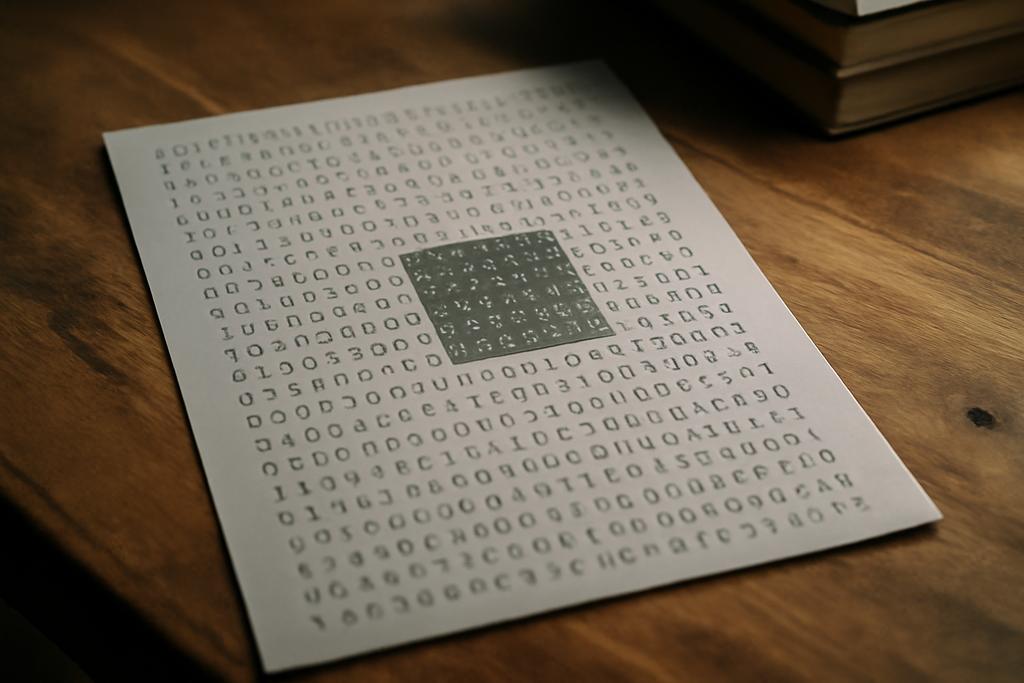In the high-energy theater where neutron stars spit out X-rays, a quiet revolution is unfolding. A concerted set of observations with the Imaging X-ray Polarimetry Explorer (IXPE) has begun to map not just the light itself but how that light is oriented as it journeys from the surface of a neutron star to our telescopes. The result isn’t a single, simple fingerprint but a time-resolved, energy-dependent portrait of polarization that changes as matter swirls along the star’s magnetic and gravitational stage. It’s as if we’re listening to the orchestra behind the lights, catching subtle shifts in the bow strokes and the wind, and realizing the mood of the performance depends on which part of the Z-track the system is playing.
At the heart of this study are Z-sources, a class of neutron-star low-mass X-ray binaries that blaze with light when matter from a companion star funnels onto a neutron star. The team behind the work is led by Andrea Gnarini of the Università degli Studi Roma Tre, with collaborators from INAF and other Italian facilities. Their joint effort—grounded in model-independent, time-resolved X-ray polarimetry—sits at the intersection of observation, geometry, and the physics of ultra-dense matter. It’s a reminder that polarization can reveal the shape and motion of regions we cannot image directly, much like listening to wind patterns to infer the geometry of a distant storm.
What makes Z-sources tick
Z-sources earn their name from the zig-zag path they trace in hardness-intensity diagrams—three branches that sweep from the horizontal branch (HB) through the normal branch (NB) to the flaring branch (FB). Along this track, their luminosity and the rate at which they accrete matter climb, sometimes dramatically. This is not a static system; it is a living, shifting corona of hot electrons and photons, where the geometry of the scattering region and the interfaces between disk, star surface, and corona evolve as the accretion rate changes.
The IXPE observations focus on the 2–8 keV energy window, where the polarization of X-rays in neutron-star binaries tends to reveal the imprint of the hard, Comptonized component—the photons that have bounced off a cloak of hot electrons near the neutron star. But the key twist here is not just the energy we collect; it’s the time dimension along the Z-track. By tying the polarization signal to the exact spectral state, the researchers can distinguish how the geometry of the emitting and scattering regions shifts as the system moves from HB to NB to FB. That requires combining IXPE data with contemporaneous observations from NuSTAR and NICER to map spectral states with confidence.
Model-independence matters here. Instead of forcing the data into a predefined spectral decomposition, the team uses a model-independent, time-resolved approach to extract polarization parameters at fine energy bins and across the different branches of the Z-track. This lets the data tell a story about geometry with fewer assumptions—a crucial strategy when the physics of the inner accretion flow around neutron stars tests our theories to the limit.
Listening to light: model-independent polarimetry
The IXPE mission opened a new window onto X-ray polarization in celestial sources. By combining IXPE’s polarization measurements with NuSTAR and NICER, the Roma Tre and INAF team could pin down not only how polarized the X-ray light is, but how the polarization angle changes with energy and with the spectral state of each source. In practice, this meant analyzing each Z-source along its HB, NB, and FB, and checking how the polarization degree (PD) and polarization angle (PA) respond to energy, time, and state. The analysis emphasizes the PCUBE method in ixpeobssim, a model-independent way to estimate Stokes parameters directly from the data, while accounting for instrumental effects and uncertainties.
The results are strikingly nuanced. In most Z-sources, the average polarization in the 2–8 keV band tends to be highest on the HB, then declines toward the NB, and, for several sources, climbs again on the FB. That is not a monotone story, but a narrative with peaks, valleys, and occasional rotations of the polarization angle. Moreover, when the data are sliced by energy, the polarization degree often rises with energy, and in some cases the polarization angle itself tilts by a few tens of degrees between low and high energies. These are not random fluctuations; they map to structural changes in the hard-emission region and perhaps to how photons “see” the neutron star’s surface and its surroundings as the accretion flow reorganizes behind the scenes.
To anchor the science in a concrete frame, the team reports observations from six Z-sources, including Cyg X-2, XTE J1701–462, GX 5–1, Sco X-1, GX 340+0, and GX 349+2. The measurements are complemented by a careful mapping of each source’s state along the Z-track using NuSTAR’s higher-energy view of the spectrum, NICER’s timing, and IXPE’s polarization data. This cross-instrument synergy is essential: polarization is only one piece of the puzzle, and understanding how it fits with the spectral components—soft disk emission, the neutron-star surface emission, and the hard Comptonized component—requires a multi-wavelength, multi-messenger approach.
What the data reveal about the corona and the track
The big, recurring motif across the dataset is a clear pattern: polarization tends to be strongest on the HB, weaker on the NB, and, for some sources, climbs again in the FB. The HB’s polarization often exceeds 4% in the 2–8 keV band, making Z-sources among the most polarized neutron-star low-mass X-ray binaries in this energy range. As sources migrate to the NB, the PD typically falls to roughly 1–2%, and whether the FB resurrects polarization varies from source to source. For Cyg X-2 and Sco X-1 in particular, the FB can show a renewed polarization signal, hinting at a reconfiguration of the hard-emission region when the accretion rate surges again.
Polarization angles add another layer of depth. In several cases, the PA remains broadly aligned with the system’s jet direction or with disk-related structures, but that alignment is not universal. For Sco X-1 and GX 349+2, the observations reveal a PA rotation when moving from NB to FB, sometimes by about 15–30 degrees. The angles don’t swing by a full 90 degrees, which would be the clean signature of a strictly axisymmetric, single-component geometry. Instead, the data hint at a more nuanced reality: perhaps a tilted inner region of the disk, a spreading layer on the neutron star, or an outflowing wind that polarizes photons in a way that depends on the viewing geometry and the accretion state.
The energy dependence is equally telling. In several sources, the polarization degree rises with energy, and in some cases the polarization angle also shifts with energy. Those trends challenge the simplest pictures in which a single, uniform scattering region dominates the X-ray production in all energy bands. Instead, they suggest a layered, evolving geometry where different energy photons “sample” different regions of the corona, the boundary layer where the accreted material spreads on the neutron star surface, and the inner disk’s reflection features.
One of the most intriguing takeaways is that these results cannot be easily explained by straightforward relativistic light-bending or by simple, axisymmetric models. The observed rotations, which are typically well under 90 degrees, point toward tilted or warped inner regions and possibly to dynamical winds that reprocess radiation in a direction-dependent way. The authors discuss a suite of plausible scenarios, including a spreading layer that changes its latitude coverage as the accretion rate changes, or a mildly anisotropic wind that subtly polarizes photons after only a few scatterings. In short, the polarization fingerprints are painting a picture of a dynamic, geometrically rich inner environment around the neutron star, not a static, one-size-fits-all corona.
Why this matters for the physics of accretion and coronae
The IXPE-era polarimetry of Z-sources is more than a catalog of numerical values. It’s a diagnostic that can discriminate between competing theories about how matter behaves in the intense gravity near a neutron star. The polarization signal is sensitive to the shape, orientation, and optical depth of the region where photons gain their high energies—the hot corona that sits above the accretion disk and, in many models, near the NS surface itself. When polarization is strong on the HB and weaker on the NB, it suggests the geometry of that hot, scattering region is elongated or flattened in a direction that changes as the accretion rate increases. If the corona were a perfect sphere, the polarization would be small; if it’s slab-like or wedge-shaped, the PD could easily reach a few percent under the right conditions.
Equally important is the energy-dependent behavior. A rising PD with energy implies that higher-energy photons are more efficiently channeled by the same geometric structure, or perhaps that different energy bands probe different aspects of the emission region (for example, a hotter inner region or a more optically thick scattering envelope). The occasional rotation of PA with energy argues against a perfectly axisymmetric geometry and invites models in which the viewing angle of multiple, misaligned emitting zones blends into the observed signal. The authors discuss how a tilted inner disk, a latitudinally structured spreading layer, or even a wind could produce such effects, and they emphasize that the net polarization depends on how these components overlap and are illuminated by the neutron star’s surface and the disk reflection spectrum.
Perhaps most exciting is what this teaches us about the broader landscape of accretion physics. X-ray polarization has long promised to reveal geometry where spectroscopy alone leaves ambiguity. The Z-sources studied here show that the corona is not a single, stationary reflector but a dynamic, evolving structure that responds to the rate of mass transfer and to the spatial arrangement of the disk and the boundary layer. The results hint at a progression: at high accretion rates, the corona may reconfigure into a geometry that yields a different polarization signature, and at lower rates, the light finds a different path through the system’s optical depth. This kind of information is precisely what we need to connect the microphysics of scattering—how electrons upscatter photons in extreme environments—with macroscopic models of accretion, jet production, and the geometry of the innermost stable regions around dense stars.
Why this matters for the future of high-energy astrophysics
In a field where most progress relies on spectral fitting and timing analysis, polarization adds a third dimension that can decisively break degeneracies. The Z-source study demonstrates that model-independent polarimetry, when combined with broadband spectroscopy, can reveal the geometry of emission regions in a way that’s not possible from intensity alone. It’s a proof of concept that X-ray polarimetry can be a decisive tool for understanding how matter behaves under the most extreme conditions, and it foreshadows the richer, three-dimensional view we’ll gain as more sources are observed and as polarimetric analysis matures.
Another important implication is methodological. By coordinating IXPE with NuSTAR and NICER, the team shows how to extract coherent, state-resolved polarimetric information across multiple instruments. This is not just a data exercise; it’s a blueprint for how to talk across different wavelengths and detector technologies to build a consistent physical picture. As IXPE continues to survey the X-ray sky, the idea that we can time-resolve polarization alongside spectral state becomes a new standard in high-energy astrophysics—a toolset that could extend to black hole binaries and active galactic nuclei, where geometry and dynamics play equally crucial roles.
And there’s a human story here too. The paper embodies a collaborative, cross-institutional effort—an international effort with a distinctly Italian backbone. The work was carried out by researchers from the Università degli Studi Roma Tre and INAF institutes in Rome, Cagliari, and Bologna, among others. The lead author, Andrea Gnarini, sits at the confluence of theory and observation, translating the delicate language of polarization into a narrative about the inner lives of neutron-star binaries. It’s the kind of human-centered science that reminds us how much we can learn when teams sew together diverse expertise and instruments to listen more closely to the cosmos.
Looking ahead
The first wave of IXPE-based, time-resolved polarimetry of Z-sources has opened a doorway. The follow-up work—described by the authors as the spectro-polarimetric phase—will decompose the polarization into contributions from the soft thermal disk emission, the neutron star surface, and the hard Comptonized component. That will allow for a more detailed disentangling of geometry, velocity, and optical depth in each region. It will also sharpen our understanding of how a spreading layer, a warped inner disk, or potential winds imprint their signatures on the X-ray light we detect here on Earth.
In practical terms, the findings already guide what to look for in future observations: we should expect polarization signals to be state-dependent, energy-dependent, and sometimes rotationally curious. This means that to unlock the next layer of physics, researchers will want to push toward higher signal-to-noise in the 2–8 keV band, extend polarimetric coverage to a broader energy range, and coordinate time-resolved studies with detailed spectral modeling to identify which component dominates in which branch of the Z-track and at which energy. Theoretical work will need to account for curious geometries—tilted disks, spreading layers that change their latitudinal footprint, and perhaps winds that shape the polarization without dominating the spectrum. It’s not a trivial puzzle, but it’s a solvable one with the right combination of data and imagination.
As a closing thought, these results remind us that polarization is not a dry technical metric; it is a doorway into the dynamics of extreme gravity, magnetism, and plasma physics. The Z-sources’ polarization tells a story about how matter behaves when it is pulled, pressed, and heated to the point where light itself twists and turns through scattering in a crowded, energized environment. It is a narrative that bridges the gaps between microphysical processes and the grand architecture of accretion, illumination, and jet formation in the most compact laboratories in the universe. And it is a story that is just beginning to unfold, one photon at a time, guided by a team that listened closely to the light’s hidden orientation and found a richer, more dynamic cosmos beneath the X-ray glare.










